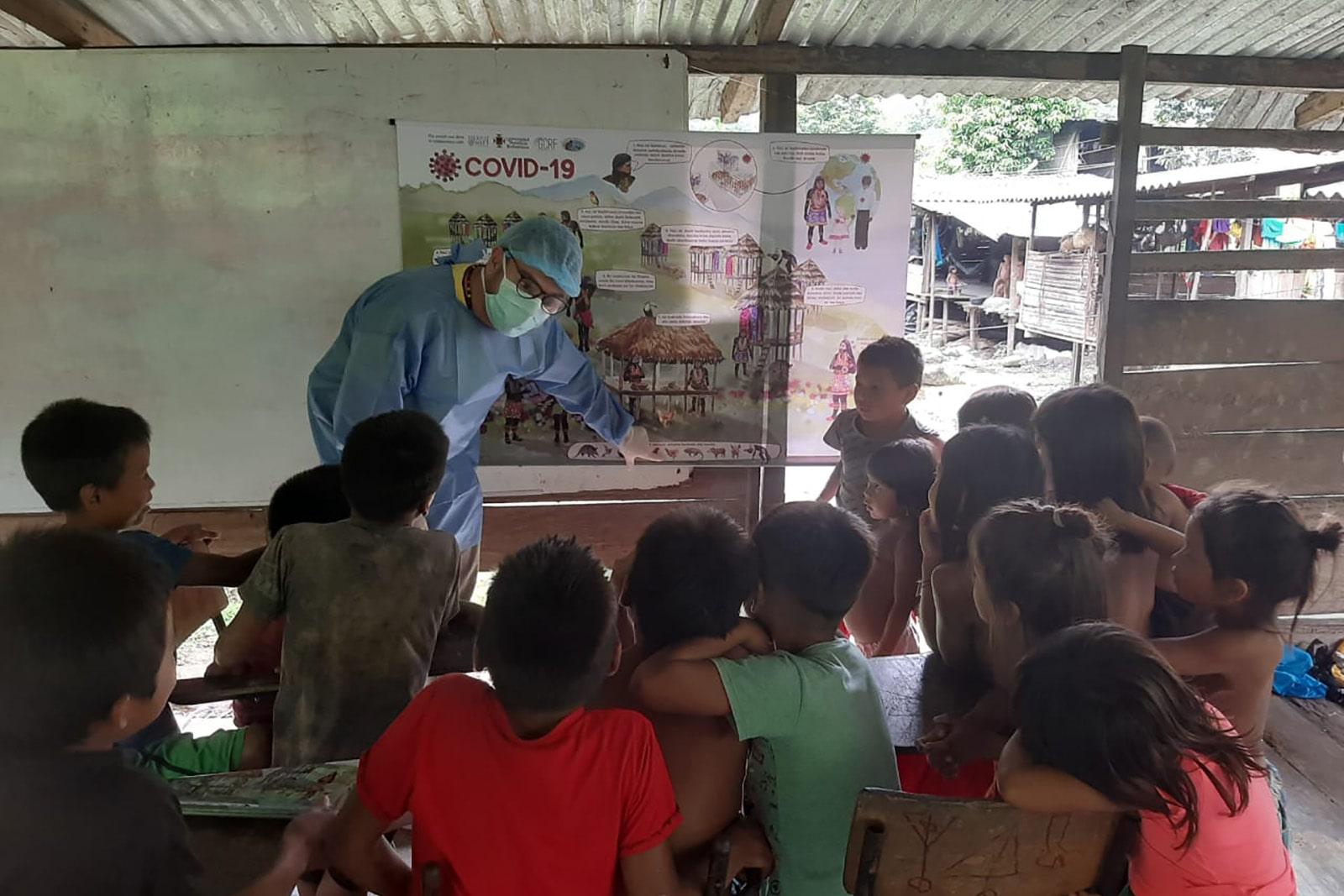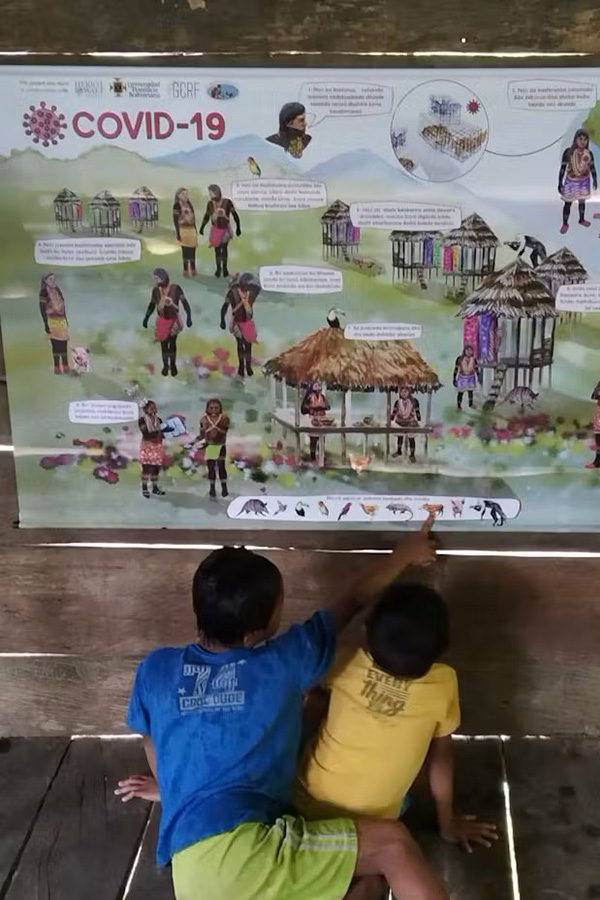This project aimed to estimate the diagnosis and seroprevalence of Covid-19 and understanding how local cultural traditions and beliefs influence the infection in the indigenous communities in Choco, Colombia.
15 October 2020

The improved understanding was incorporated into the gamified communication and educational strategy for the prevention of the disease to reduce the risk of transmission.

The Department of Choco on the Pacific Coast of Colombia is one of the poorest regions in the country. Basic health care and services are limited and many settlements do not have access to communication technology. There are six languages spoken in the area, and literacy levels are low. For Indigenous people this was yet another disease to battle without recourse to Western medicine, along with frequent outbreaks of yellow fever, malaria and tuberculosis. Indigenous people have felt the impact of the coronavirus pandemic more than other communities. With limited access to Western medicine to treat conditions that are entirely curable, and little trust in white people after centuries of colonial oppression, they have relied on their own traditional ancestral medicine as their only response to the pandemic.
Through our research, we attempted to bridge the gap between traditional ancestral knowledge and Western understanding of the pandemic by introducing strategies to reduce the risk of transmitting the disease while being respectful of local traditions.
Posters were co-designed with community leaders to share information about the virus to low-literacy communities. The posters depict indigenous people in their traditional clothes and in their local environment. They were translated into six languages and placed in the community centres. communal areas. Community members showed more trust and interest in the information on the poster, in contrast with their attitude towards the materials they had previously received. The poster recreated their local and domestic life showing everyday scenes and items rather than the standardised Western-looking figures and contexts normally seen in infographics. Seeing themselves in the poster helped them relate to it.
Within the poster we created a puzzle with hidden local animals. Children were the first to engage with the animals and spent a long time in front of the poster trying to find them. Soon adults would join them and start a discussion about what the poster was communicating. The puzzle engaged adults indirectly through the initial excitement of the children, and so both groups paid more attention to the information provided on the poster.
It might seem unusual to use such a playful approach among Indigenous communities, but they have been using games to share their knowledge and traditions for generations.
Sensitive and careful attention to Indigenous people’s lives and culture combined with elements of gamification helped us to successfully develop common understanding about COVID-19, and could help spread health messages in other parts of the world.
The project is led by Dr Agnessa Spanellis in collaboration with UPB-Medellin, Colombia. The project is GCRF-funded.